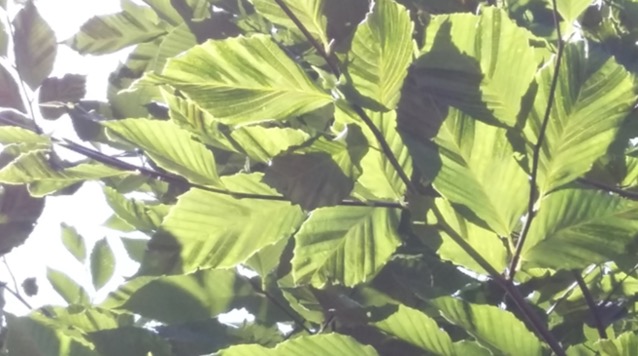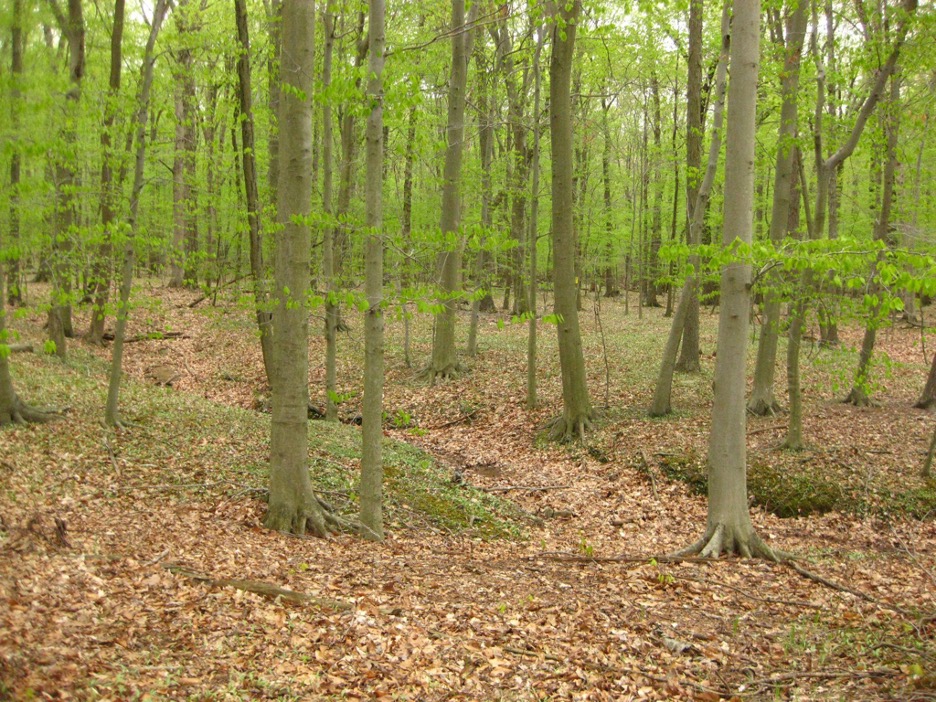By Bob Tomaselli & Kaitlin Muccio
In the heart of Hopewell Township, a quiet crisis is unfolding among one of New Jersey’s rarest natural features: the mature American beech forests of Curlis Lake Woods. Struck by a fast-spreading disease with no known cure, these stately trees—once indicators of prime farmland—are now at risk. But a major reforestation effort is offering hope to help the forest.

A Forest Worth Fighting For
The American beech (Fagus grandifolia) is the only beech species native to North America. Known for its smooth, silver-gray bark and towering height of up to 115 feet, it plays a vital role in eastern U.S. forests—providing food, shelter, and nesting sites for countless wildlife species.
In Hopewell, one of the most significant remaining lowland beech forests stands in Curlis Lake Woods, near Pennington. These woods are exceptional not only for their size but also for being strongly dominated by beech, a rare trait in central New Jersey’s lowland areas. In the late 1980s, the site became the focus of one of the earliest preservation efforts by what is now the Friends of Hopewell Valley Open Space (FoHVOS). After years of advocacy and coordination, Curlis Lake Woods became FoHVOS’s first major conservation win in 1993.
Today, the woods feature a system of trails that loop through mature beech, maple, and red oak trees and stretch along a half-mile of undeveloped lakeshore. The trails connect to the Mercer County Equestrian Center and Rosedale Park/Mercer Meadows, serving hikers, cyclists, and horseback riders.
A New Threat: Beech Leaf Disease
Now, the forest faces a new and urgent threat. Beech Leaf Disease (BLD), caused by the invasive nematode Litylenchus crenatae mccannii, has taken hold. The microscopic roundworm infects leaf buds and foliage, weakening trees and eventually causing mortality—often within 2 to 10 years. First identified in Ohio in 2012, BLD has since spread throughout the northeastern U.S., including into Hopewell’s forests and suburban neighborhoods.
All the beech trees in Curlis Lake Woods show some degree of infestation. While some experimental pesticide treatments have shown promise in improving tree health or controlling the nematodes, none are currently viable for large-scale use in natural settings like Curlis.
Regrowing a Resilient Forest
To ensure the forest survives long after the beech decline, FoHVOS and the Mercer County Park Commission (MCPC) are leading a major reforestation effort. The strategy: proactively underplant with a mix of native trees and shrubs to help a new forest take root before invasive species can dominate.
Last year, 97 acres of Curlis Lake Woods were cleared of invasive plants such as multiflora rose, Japanese barberry, and linden viburnum. This spring, MCPC will supply over 1,000 native trees and shrubs to be planted in upland forests and along the lakeshore. Species like shagbark hickory, mockernut hickory, and various oaks will be used to regenerate the canopy. Saplings will be protected from deer browse using tree tubes and temporary fencing.
Ongoing maintenance will include monitoring invasive regrowth and maintaining protective tubing. Additional planting is planned over the next two years.
How to Get Involved

Two upcoming opportunities invite community participation and learning:
- Saturday, April 19: Guided Walk with Dr. Mike Van Clef
FoHVOS Stewardship Director Dr. Mike Van Clef will lead a walk through Curlis Lake Woods to discuss the ecological role of the American beech and efforts to combat Beech Leaf Disease. - Saturday, April 26: Community Tree Planting Day
FoHVOS and MCPC will co-host a volunteer event to plant native trees and shrubs in Curlis Lake Woods. All are welcome to help restore this special forest.
The loss of the American beech will leave a noticeable gap in Hopewell’s landscape, but thanks to early action and dedicated stewardship, a new forest is already taking root—one that honors the past while preparing for the future.







